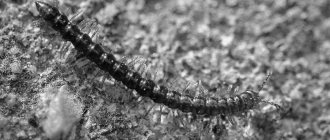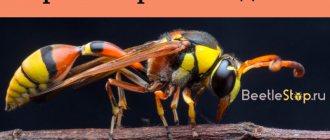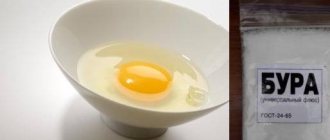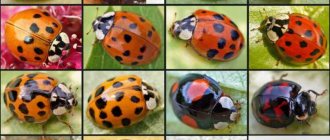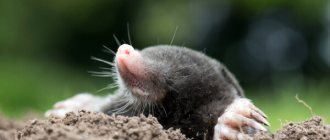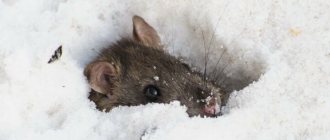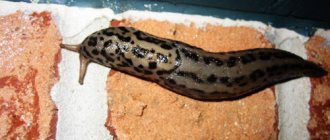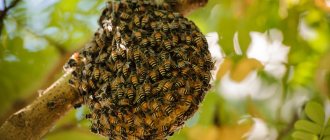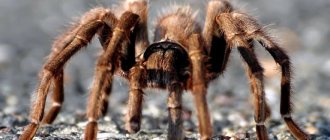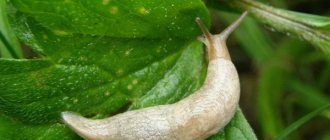Cockroaches are unique living creatures, and this becomes especially clear when you begin to study the structure of a cockroach and the body of this insect. Cockroaches have been accompanying humans for thousands of years and settling in their homes.
Our time is no exception, although man has come up with a lot of ways to get rid of such a neighborhood. It is believed that this is one of the most ancient representatives of the arthropod family, which is at least 300 million years old.
General description and origin
Cockroaches are insects belonging to the phylum Arthropods , order Cockroaches . They love damp and warm places. Domestic cockroaches are most active at night and hide in secluded places during the day. Their diet includes the remains of plants and animals.
REFERENCE ! These parasites are extremely hardy . It is known that some species can go without food for up to several weeks. These insects are very resistant to radiation . The dose of radiation that can cause them any harm must be almost 15 times higher than the “human” dose.
Parasites multiply very quickly. In order to lay eggs, the female mates with the male, although some species give birth to live young , which look almost no different from adults. The eggs are protected by a membrane called the ooteca. The lifespan of these insects is from 7 months to 2 years .
Next, we will answer the following questions: how many legs does a cockroach have, do cockroaches have eyes and a brain?
Internal organs of a cockroach
According to some claims, a headless cockroach can live for several days. Such possibilities are associated with the structure of the nervous system and other organs, which allows the cockroach to live without a head.
Structure of the nervous system
The central nervous system of the cockroach is formed by 11 independent nerve ganglia. In the head of an insect there are only 2, but large, nerve nodes. They are located under and above the pharynx, and are responsible for the actions of the eyes, whiskers and probes located on the lips of the cockroach.
3 thoracic nodes, together with the subpharyngeal node, control the operation of the oral apparatus, wings, paws and head muscles, as well as the muscles of the thoracic region.
In the belly of the insect there are six small nerve ganglia, the largest of which is the terminal one, which is responsible for the functions of the genital organs and sensitive cerci.
Important point! The internal structure of the cockroach is such that it can easily do without a head, especially since its breathing is not connected to the nerve nodes located in the head. There is no pressure in his circulatory system, so he does not bleed. At the same time, he does not waste energy while being immobile, so he can easily do without food. Under certain conditions, it can live without a head for up to 1 month.
The nerve fibers of a cockroach are connected to all organs of the insect, including the sense organs. The cockroach not only has unique vision, it also has excellent hearing. The insect's auditory receptors are located near the anus.
Circulatory system
The circulatory system is of an open type, while the cockroach’s blood is white and washes all internal organs, being in free circulation. The cockroach's heart is a tubular organ located in the dorsal pericardium. The middle sinus contains the intestines, and the thoracic sinus contains the nerve cord.
Due to the work of the tubular organ, hemolymph (blood) is pumped through the circulatory system. The work of the heart is carried out due to pressure differences resulting from the work of the muscles. Blood is pumped slowly, so cockroaches are quite sensitive to changes in ambient temperature.
Respiratory system
On both sides of the abdomen there are tiny holes called spiracles, through which the insect breathes. There are 10 pairs of them, which means that on each side of the abdomen there are 10 such spiracles.
From these holes extends a whole system of tubes - tracheoles, which ultimately connect with 3 pairs of several large tracheal trunks. Oxygen reaches all organs by diffusion.
Important fact! Cockroaches are able to hold their breath for up to 40 minutes, blocking their spiracles, which allows the insect to survive in difficult living conditions.
As a rule, a cockroach, being stationary, expends practically no energy. It is believed that they are in a state of movement for only 25% of their lives, so cockroaches are also considered the laziest insects.
Digestive system
When food enters the cockroach’s mouth, it is moistened with saliva (previously crushed) and enters the goiter through the esophagus, after which it is sent to the gizzard. Therefore, the process of digestion of food begins in the crop and ends in the stomach. After this, the food enters the intestine, which consists of the foregut and hindgut.
Interesting moment! The foregut consists of several parts. Immediately behind the mouth opening there is a buccal chamber with 6 teeth. With their help, the insect additionally crushes the food that has entered the mouth.
In the intestines of a cockroach there is a full range of bacteria and fungi that help the insect digest food objects, including even inedible food of inorganic origin.
Feces and urine are released through one anus. Urine is collected using special channels. They collect toxins dissolved in water throughout the body and send them to the anus.
Reproductive system
Males have a rather complex reproductive system. For example:
- The testes are located in segments 4–6 of the abdomen.
- The reproductive system includes the fungal (utricular) gland.
- The seminal vesicles empty into this gland.
- There are also organs of copulation.
- The female reproductive system is no less complex and consists of:
- From the ovaries, 8 avarioles each.
- From a pair of oviducts that are connected to the vagina.
- From the genital chamber where eggs accumulate. And collateral glands are associated with this chamber, which secrete a special secretion for the formation of a capsule (ootheca).
- From the ovipositor.
After fertilization, a capsule is formed into which the fertilized eggs enter.
Important point! The human cell nucleus includes 46 chromosomes, which are responsible for the transmission of hereditary information. Cockroaches have as many as 48 of them, although this is in no way evidence of the unique complexity of their body. Similar (relict) species of insects are distinguished by a large number of chromosomes.
According to scientists, cockroaches are more primitive, but the presence of 2 extra chromosomes indicates that the insects are quite resistant to external manifestations. It was this factor that turned out to be fundamental, ensuring the survival of the species for millions of years.
Features of the structure of cockroaches
Cockroaches of different species have a similar structure, but differ in color and size . Here are the main signs of these insects:
- the body length can reach 10 centimeters, but species living in Russia rarely exceed 3 cm;
- the body is oval-shaped , very flat;
- head shaped like a triangle, covered with a hard shell;
- parasites have a brain , but the body is able to function without it (when decapitated, the body continues to move and breathe);
- the oral apparatus is gnawing, cockroaches have strong and strong jaws with teeth consisting of chitin (many species bite);
- all types of parasites have eyes and long antennae ;
- Insects have six paws , they are covered with small spines;
- some species can fly thanks to strong and dense wings, under which there are elytra.
What do cockroaches look like?
The cockroach order includes more than 7,500 thousand known species. These insects can be found almost all over the world and the appearance of individual varieties can vary greatly.
The main interspecies differences are body size and color.
The body length of the smallest representative of the order is about 1.5 cm, and the largest is more than 10 cm. As for color, depending on the species, it can vary from light brown or red to black.
Cockroaches also have common features that are common to all members of the order. These include the shape of the body, which, regardless of the type, will be flat and oval. Another feature characteristic of all cockroaches is the hard chitinous covering of the entire body and limbs.
Cockroaches: photo.
Photo
What a cockroach looks like, photo below:
What does a small cockroach look like:
Folk remedies for cockroaches
People struggled with cockroaches even in those distant times, when pest control had not yet taken shape as a science and had not grown into an entire insect extermination industry. Empirically, substances have been identified that can repel cockroaches and others that can physically destroy them.
You can scare off cockroaches for a while with substances that, as a rule, are always on hand in every housewife’s kitchen or in a home medicine cabinet. These are vinegar, ammonia, essential oils with pronounced repellent properties.
Ordinary baking soda can kill a cockroach. When sodium bicarbonate enters the body of a cockroach, it reacts with digestive juices, resulting in the release of carbon dioxide. Carbon dioxide has a toxic effect on the gastrointestinal tract of the cockroach and kills it almost instantly. In order for the cockroach to swallow soda, it is mixed in equal proportions with granulated sugar, which acts as bait. The finished powder is scattered in places where cockroaches are likely to accumulate.
But the most popular method of fighting cockroaches has been and remains boric acid.
Boric acid for cockroaches
Boric acid is a natural substance that is extracted from minerals common in the Middle East and Mediterranean. Its pronounced antiseptic effect has found wide application in medicine. But for a cockroach, it is a strong poison, which, once in the body, has a detrimental effect on the peripheral nervous system, gradually leading the cockroach to paralysis and suffocation. The lethal dose for one cockroach is 2-3 milligrams of boric acid. A cockroach can get this portion even if it is not interested in it as a food product. Running across the powder scattered on the floor, a cockroach will inevitably “get dirty” on its paws and abdomen. In terms of cleanliness, this insect can be compared to a cat, which licks itself from morning to evening. During the first personal hygiene procedure, boric acid will enter the parasite’s body. In order for the process of destroying cockroaches to proceed faster and more actively, it is necessary to make it attractive to the red barbel. For this purpose, boric acid is mixed with products that are favorite delicacies of cockroaches. These include:
- Raw egg yolk
- Boiled egg yolk
- Sugar, powdered sugar and starch, diluted with water
- Boiled potatoes
The proportions are not very important - it is permissible to mix the powder by eye. Boric acid is not expensive, has no pronounced odor, and a possible overdose will only benefit your patients.
Read in a separate post our analysis of whether boric acid helps against cockroaches.
You can get more detailed information about folk remedies for killing cockroaches from a separate article prepared by our specialists. You can also find out what else cockroaches are afraid of, what smells cockroaches don’t like, and whether dichlorvos helps against cockroaches.
Species found in Russia
Scientists know more than 4.6 thousand species of cockroaches, but most of them live in warm countries. There are about 55 species of these insects in Russia , but only a few of them are the most popular.
Red cockroach (Blattella germanica)
People often call such parasites Prussians. They very often settle in residential areas and create huge colonies . Red cockroaches live in cabinets, drawers, furniture and even in the refrigerator. They feed on foods of any freshness and adapt to any conditions.
This is what attracts them to apartments and houses where people live:
- easily accessible food (on the table, floor, stove, in the trash can, etc.);
- plants that parasites can feed on in the absence of food;
- water is freely available (leaking pipes, remaining water in the sink, etc.).
Black beetle
People encounter not only Prussians, but also black cockroaches, which often live in human homes. Their colonies come from sewers, garbage cans and basements. It is known that parasites of this species rarely rise high, so they can only be found on the lower floors of residential buildings .
Here are the features of these insects:
- some individuals reach a length of 3 centimeters ;
- the color can be not only black , but also dark brown and even red;
- they eat all types of foods, and if there is a shortage of them, they eat leftovers;
- reproduce noticeably faster than red cockroaches;
- They leave a specific and very unpleasant odor in their habitat.
IMPORTANT ! These parasites live near a food source : under the refrigerator, behind the stove, near the trash can, etc. It is believed that the presence of black cockroaches indicates a very poor sanitary situation.
This opinion was formed due to the fact that these insects carry dangerous diseases (cholera, E. coli, etc.). They move through sewers and street garbage cans, and then crawl into human housing, bringing with them a huge amount of bacteria and other harmful microorganisms.
In warm countries, black cockroaches do not live indoors . They settle only on the street, crawling under large stones or into cracks in buildings. Parasites enter residential buildings only in Russia. This is most likely due to the cold winter climate. Representatives of this species must be disposed of.
The thoracic region and the purpose of the paws
On the thoracic part of the cockroach's body there are wings with elytra, as well as insect legs. Cockroaches, like any representative of the “insect” class, have 6 legs, that is, 3 pairs. Each tarsus is located on one of the thoracic segments and represents:
- Prothoracic legs, which have the shortest length and serve as “brakes” if the insect moves too quickly.
- Medium-thoracic paws that can move in any direction, providing the insect with high maneuverability.
- The metathoracic legs are designed to move the insect only forward. They are the longest in size.
The cockroach's paw is a rather complex mechanism, which includes 5 segments. The thighs, flattened in shape, are armed with spines below.
The first 4 segments are armed with pads, and the fifth with claws with a suction cup located in the center. This allows the insect to crawl on both horizontal and vertical surfaces.
Interesting fact! Having relatively long legs helps the cockroach not only run fast, but also jump high. In addition, with the help of all 3 pairs of limbs, the cockroach takes care of itself from the head to the abdomen.
In other words, the insect uses 3 pairs of its legs for its intended purpose. Cockroaches are able to move along the surface at a speed of about 4 kilometers per hour. If a cockroach grew to the size of a cheetah, it could easily outrun it.
With the help of sensitive hairs located on the legs, the cockroach assesses the situation around itself. In 1 minute he is able to change his trajectory up to 30 times.
Here, on the thoracic region, the wings with more rigid elytra are attached. Using the length of the wings, you can determine the gender of individuals: females have much shorter wings.
These insects use their wings during the mating season, as well as when moving or falling. By spreading their wings, individuals demonstrate their readiness to mate. Despite the presence of wings, cockroaches cannot fly, although there is one species that lives in South and Central America that can fly.
Albinos
Most people are of the opinion that the albino cockroach is a separate species, but this is wrong. Insects acquire this color after molting . They are rarely seen because during this period the parasites hide in dark places until their color becomes normal.
Some individuals may acquire a white color due to exposure to chemical reagents. Many people believe that these insects become light-colored because they live in pitch darkness, but this opinion is incorrect. Scientists have proven that there is no separate albino species .
Causes of cockroaches
If scorpions suddenly appeared in your house, it would be a reason to be surprised. And cockroaches are synanthropic insects, they are always close to a person, always somewhere close to you - by the trash cans in the courtyard of the house, on the landing near the garbage chute, in a neighboring apartment or in the basement. We looked in more detail at where cockroaches live in a separate article. Since you are a human and nothing human is alien to you, you should not be too surprised by the appearance of cockroaches on your territory. Cockroaches are an integral part of society and civilization, and they do not require any special reason or special invitation to visit your home. In this matter, we can only talk about the greater or lesser likelihood of such guests appearing.
You don't have to be an expert in etymology to understand the motivation of a cockroach. He needs water, food and a comfortable air temperature for life. If you create attractive conditions, then your apartment turns into a high-risk zone, and cockroaches are more likely to appear in it; if the house is clean and orderly, then less likely. Often cockroaches appear in apartments where cosmetic or major renovations have just been done, which causes amazement among the owners of the renovated housing. There is a simple explanation for this “phenomenon” - cockroaches can be attracted by the strong and pronounced odors of fresh wallpaper glue, the wallpaper itself, which also smells strongly in its pristine purity, and the aromas of other natural materials that smell just when they are new. The sensitive sense of smell of cockroaches will not ignore this exciting flow, especially if nearby they have multiplied to a critical number, when there is no longer enough food and living space for everyone. It is important to prevent cockroaches from nesting and taking root by taking drastic measures to eliminate them.
American look
This species is native to Africa . It came to America and other countries with goods that were transported by sea.
They quickly adapted to new living conditions and settled in human habitations.
Representatives of this species are very mobile and can even bite.
They reproduce quickly and feed on any food, but cannot tolerate low temperatures .
What do they eat?
In the process of evolution, cockroaches have adapted to the most extreme living conditions, and also learned to eat any food, even seemingly inedible at first glance. Among the foods that a cockroach can eat:
- spoiled food;
- plant leaves, fruits, vegetables;
- paper;
- soap;
- fabric, leather, wood.
Even though insects are omnivores, they still have food preferences. So, what do cockroaches love most:
- sugar;
- sweets;
- baking;
- meat and meat products.
Dinner
In case of acute food shortage, cockroaches can attack people, biting off pieces of skin, and also eat dead relatives.
Useful materials
Read other articles about cockroaches:
- Interesting facts: what nicknames did people come up with for these insects; some myths about where the mustachios disappeared and what it could mean?
- Can cockroaches cause physical harm to humans, such as getting into the ear and nose?
- A detailed article about how to get rid of them, the most effective methods of control and prevention.
- There are now many treatments on the market against these parasites. Therefore, we wrote an article about how to choose a drug that is right for you, described the best products available today, and compiled a rating of insect repellent drug manufacturers.
- And of course, we couldn’t ignore all sorts of folk methods, in particular the most popular is boric acid.
- Well, if you yourself cannot cope with uninvited guests, then we recommend turning to professionals. They have modern fighting technologies and will save you from misfortune once and for all.
Below is a list of drugs that have proven themselves:
- Powders and dusts: FAS, Clean House.
- Crayons and pencils: Mashenka.
- Traps: Foresight, Combat.
- Very effective gels: Dohlox, Global.
- Aerosols: Raid, Raptor.
- Strong sprays: Executioner, Regent, Get, Cucaracha, Karbofos.
- Find out if electronic repellers help?
In Russia, not only the above-mentioned species are found, but the number of other species is small. Cockroaches at home are very unpleasant neighbors, so it is necessary to get rid of them in every possible way.
Reproductive system
The reproductive system of a cockroach has a rather complex structure for such a small creature. All the more surprising is the fact that it is extremely difficult to get rid of uninvited guests if they have already taken a fancy to your home. It would seem that with such a complex structure of the reproductive system, difficulties should arise with the reproduction of offspring. In fact, insects have high fertility and reproduce quickly, which makes them a truly indestructible species.
The male reproductive system consists of:
- testes, which are located in 4-6 abdominal segments; utricular (fungal) gland; seminal vesicles emptying into the fungal gland; genital organ.
Spermatozoa stick together and form a spermatophore, which is surrounded by a three-layer membrane. Each of the walls is responsible for its own task of accumulating the seed, storing it or releasing it.

